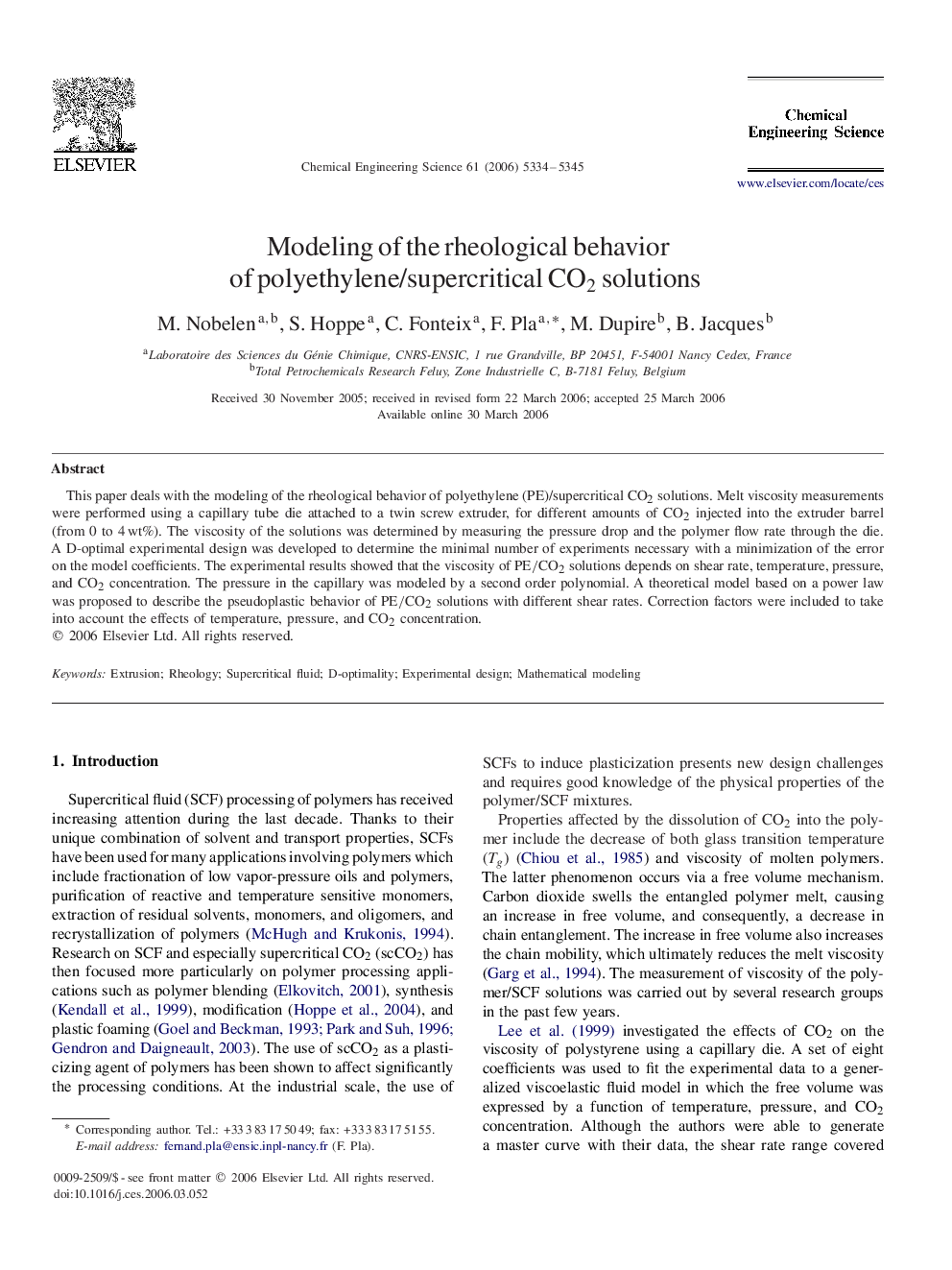| Article ID | Journal | Published Year | Pages | File Type |
|---|---|---|---|---|
| 10262999 | Chemical Engineering Science | 2006 | 12 Pages |
Abstract
This paper deals with the modeling of the rheological behavior of polyethylene (PE)/supercritical CO2 solutions. Melt viscosity measurements were performed using a capillary tube die attached to a twin screw extruder, for different amounts of CO2 injected into the extruder barrel (from 0 to 4Â wt%). The viscosity of the solutions was determined by measuring the pressure drop and the polymer flow rate through the die. A D-optimal experimental design was developed to determine the minimal number of experiments necessary with a minimization of the error on the model coefficients. The experimental results showed that the viscosity of PE/CO2 solutions depends on shear rate, temperature, pressure, and CO2 concentration. The pressure in the capillary was modeled by a second order polynomial. A theoretical model based on a power law was proposed to describe the pseudoplastic behavior of PE/CO2 solutions with different shear rates. Correction factors were included to take into account the effects of temperature, pressure, and CO2 concentration.
Related Topics
Physical Sciences and Engineering
Chemical Engineering
Chemical Engineering (General)
Authors
M. Nobelen, S. Hoppe, C. Fonteix, F. Pla, M. Dupire, B. Jacques,
